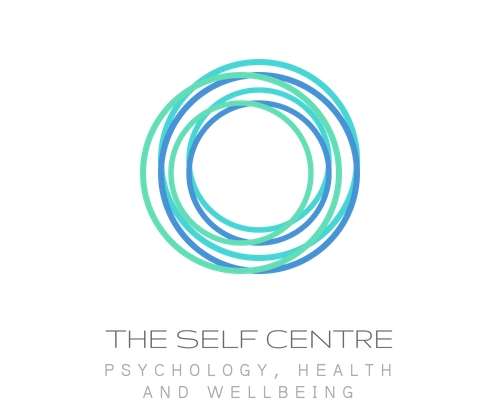
Breaking Free From Guilt: How to Recognise and Release What No Longer Serves You
by Lyndsay Babcock
Principal Clinical Psychologist & Director
Guilt is an emotion we all experience, but not all guilt is created equal. According to Dr. Becky Kennedy, a clinical psychologist and founder of Good Inside, there is a crucial distinction between “true guilt” and what she refers to as “not guilt.” Understanding this difference can help us navigate our emotions more effectively and prevent unnecessary self-criticism.
In my clinical practice, I work with many individuals who experience excessive guilt—often to the point where it inhibits their ability to take action in their own lives. Whether it’s guilt over setting boundaries, prioritising their own needs, or making decisions that go against external expectations, this overwhelming sense of obligation can keep them stuck in patterns that don’t serve them. Instead of living a life of true purpose and freedom, they find themselves weighed down by a constant fear of letting others down. This kind of guilt can be paralysing, leading to self-doubt, anxiety, and a disconnection from what truly matters to them.
So, how do we shift away from guilt—or “not guilt”—that doesn’t serve us? Let’s explore the nature of guilt, why it can be misleading, and how we can move towards self-compassion and emotional clarity.
True Guilt vs. “Not Guilt”
Dr. Becky defines true guilt as an internal signal that we have acted in a way that goes against our values. For example, if we break a promise to a friend or act in a way that compromises our integrity, we feel genuine guilt. This kind of guilt is useful—it helps us reflect, take accountability, and make amends when necessary. In this way, true guilt serves as a guide for personal growth and maintaining ethical relationships.
On the other hand, “not guilt” is a term Dr. Becky uses to describe the discomfort we feel when our actions align with our values but contradict external expectations, social pressures, or cultural norms. For example, a parent who takes time for themselves by going out with friends may feel uneasy about leaving their child, even if they know that maintaining their own well-being is essential. This discomfort is often mislabelled as guilt, but it’s actually a response to perceived judgement rather than a sign that we’ve done something wrong.
Recognising the difference between these two types of guilt is critical. When we mistake “not guilt” for true guilt, we risk making choices that prioritise external validation over our own well-being.
How to Shift Away from Unhelpful Guilt
Once we understand the difference between true guilt and “not guilt,” we can begin to shift our mindset. Here are a few strategies to help navigate these emotions:
1. Pause and Identify the Source of Guilt
When you feel guilty, ask yourself: Is this guilt coming from a real misalignment with my values, or is it driven by external pressures? If your action genuinely harmed someone or contradicted your principles, acknowledge it and consider how you can make amends. However, if your actions were in line with your values but made you uncomfortable due to outside expectations, remind yourself that discomfort doesn’t mean wrongdoing.
2. Challenge Internalised Expectations
Many of us carry guilt because of societal norms, family expectations, or cultural beliefs about what we “should” do. Reflect on where these expectations come from and whether they truly align with your values. For example, if you feel guilty about setting boundaries with a demanding friend, consider whether that guilt stems from an old belief that being a good friend means always being available. Challenge these outdated ideas and replace them with healthier perspectives.
3. Reframe Guilt as a Sign of Growth
Instead of seeing guilt as something to avoid at all costs, view it as an opportunity for learning. True guilt can help us grow by prompting us to make better choices in the future. “Not guilt” can help us recognise areas where we need to build confidence in our own decision-making rather than relying on external approval.
4. Practise Self-Compassion
When you experience unnecessary guilt, remind yourself that you are human and doing your best. Self-compassion means treating yourself with the same kindness and understanding you would offer a friend. Instead of berating yourself, use gentle self-talk: “It’s okay to take care of myself. I don’t need to feel guilty for prioritising my needs.” Practising self-compassion helps reduce the hold that guilt has over our emotions.
5. Focus on What You Can Control
Guilt often arises when we feel responsible for other people’s emotions. While we can strive to be kind and considerate, we cannot control how others feel or react. If you made a choice that aligns with your values but disappointed someone else, recognise that their feelings are theirs to process. Your responsibility is to act in a way that is true to yourself, not to manage others’ expectations.
Moving Forward with Emotional Clarity
Guilt can be a helpful emotion when it signals a need for change, but it can also be misleading when it stems from external pressures rather than personal values. By learning to distinguish between true guilt and “not guilt,” we can make more intentional choices, feel less burdened by unnecessary self-criticism, and cultivate greater emotional well-being.
The next time you feel guilty, take a moment to reflect: Am I feeling true guilt or ‘not guilt’? If it’s true guilt, use it as an opportunity for growth. If it’s “not guilt,” practise self-compassion and let go of the need for external validation. Over time, this shift can lead to a more empowered, fulfilling life—one where your decisions align with your true values, not just the expectations of others.
By embracing this perspective, we can move away from excessive guilt and step into a life driven by purpose, confidence, and self-acceptance.
